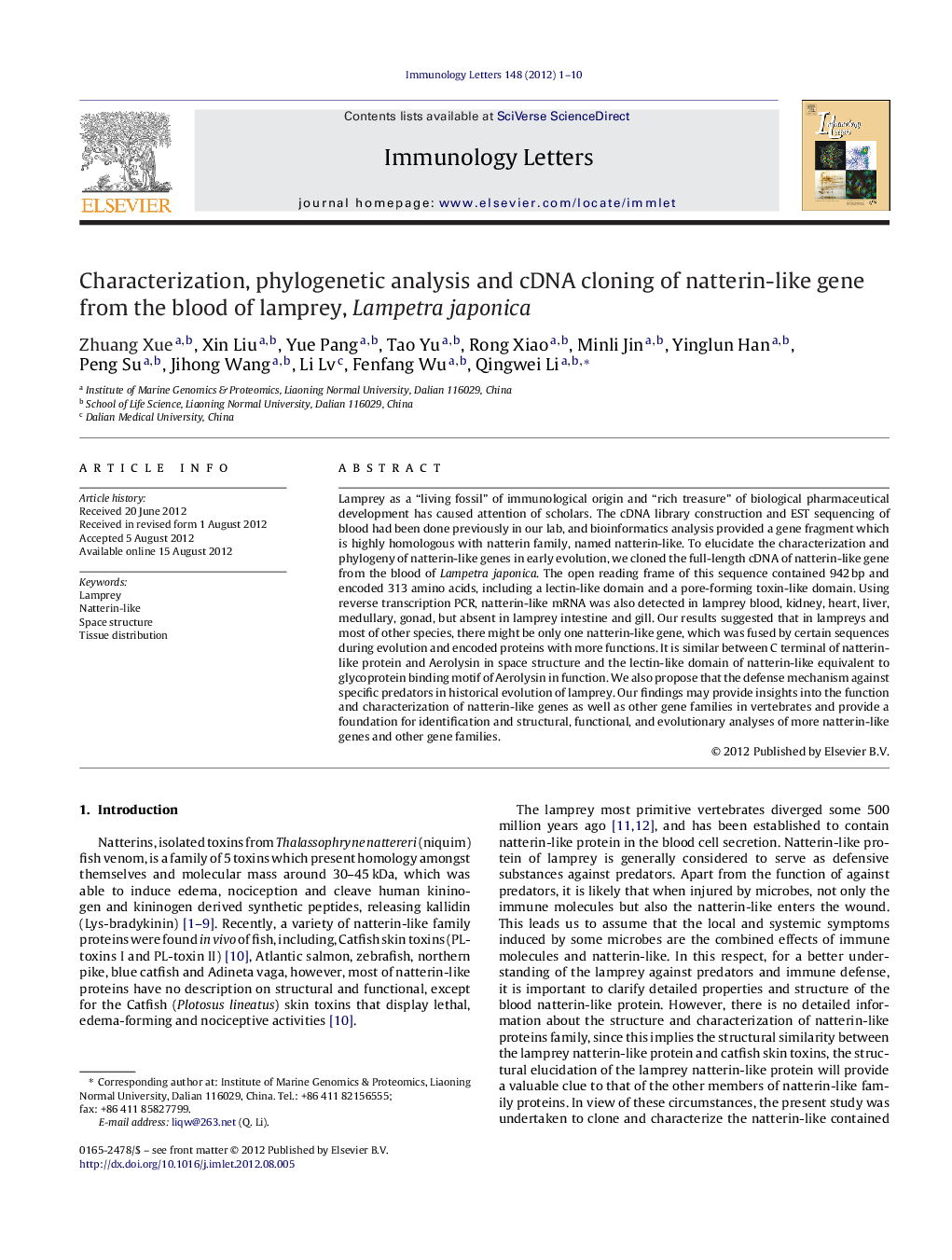| Article ID | Journal | Published Year | Pages | File Type |
|---|---|---|---|---|
| 3355610 | Immunology Letters | 2012 | 10 Pages |
Lamprey as a “living fossil” of immunological origin and “rich treasure” of biological pharmaceutical development has caused attention of scholars. The cDNA library construction and EST sequencing of blood had been done previously in our lab, and bioinformatics analysis provided a gene fragment which is highly homologous with natterin family, named natterin-like. To elucidate the characterization and phylogeny of natterin-like genes in early evolution, we cloned the full-length cDNA of natterin-like gene from the blood of Lampetra japonica. The open reading frame of this sequence contained 942 bp and encoded 313 amino acids, including a lectin-like domain and a pore-forming toxin-like domain. Using reverse transcription PCR, natterin-like mRNA was also detected in lamprey blood, kidney, heart, liver, medullary, gonad, but absent in lamprey intestine and gill. Our results suggested that in lampreys and most of other species, there might be only one natterin-like gene, which was fused by certain sequences during evolution and encoded proteins with more functions. It is similar between C terminal of natterin-like protein and Aerolysin in space structure and the lectin-like domain of natterin-like equivalent to glycoprotein binding motif of Aerolysin in function. We also propose that the defense mechanism against specific predators in historical evolution of lamprey. Our findings may provide insights into the function and characterization of natterin-like genes as well as other gene families in vertebrates and provide a foundation for identification and structural, functional, and evolutionary analyses of more natterin-like genes and other gene families.
► Cloned the full-length cDNA of natterin-like gene from the blood of Lampetra japonica. ► The first to report the amino acid sequences of proteinaceous toxins contained in the lamprey blood. ► Natterin-like is a pore-forming toxin with an unusually high toxicity. ► Propose that the defense mechanism against specific predators in historical evolution of lamprey.
